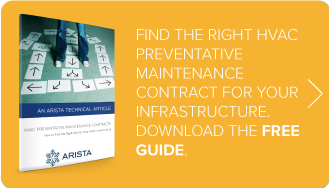DIY HVAC repair is tempting
Have you always been handy? If you can fix your car and lots of things around your home, you may be tempted to take on the challenge of DIY HVAC repair. Or maybe you’re a business owner with a maintenance staff that handle cleaning and minor repairs around your premises. They should be able to tackle DIY HVAC repair, right?
Wrong! DIY HVAC repair is not only dangerous, but it can lead to some very expensive consequences. Read on to learn why DIY HVAC repair is a temptation you should not give in to.
Why DIY HVAC repair is a bad idea
There’s a reason why HVAC service technicians need to complete years of training and apprenticeships in order to become qualified (and ideally, certified) to maintain and repair your heating and air conditioning systems. They also must continue receiving ongoing training to keep up to date on new technology so they stay qualified.
Actually there are quite a few reasons to avoid DIY HVAC repair:
Working around high voltage electricity
You already know this: handling electricity can kill you! Your HVAC systems use high voltage electricity, so don’t try it unless you are a trained electrician or HVAC tech. The small amount of money you may save with DIY HVAC repair is just not worth the potential consequences of making a mistake.
Handling dangerous refrigerant chemicals
The refrigerants in your air conditioning system can be deadly if you don’t know how to handle them safely. Not only to the person handling them, but to everyone in the building. That’s why it’s critical (and it’s also the law) that only HVAC technicians with EPA 608 certification work on your air conditioning system.
EPA 608 certification is required by the U.S. Environmental Protection Agency for technicians who perform maintenance and repair services and disposal of refrigerants. If you’re attempting DIY HVAC repair without this training, you could face deadly consequences.
You don’t have the right tools
Especially when you may be dealing with a refrigerant leak (which is a common cause of air conditioning problems), there are specialty tools and gauges that are required to properly diagnose and find the leak. Purchasing all those tools for a DIY HVAC repair, especially if you’re not sure what the problem is, can cost you more than calling in a professional in the first place.
DIY HVAC repair is more complex than you think
Heating, air conditioning and ventilation are complex systems with many components that can cause problems. Not only are there many interrelated parts, but they look different and are located in different places depending on the type of system you have and even the brand you have. As a result, trying to make a DIY HVAC repair after watching a YouTube video is just a disaster waiting to happen.
Here’s something else to consider about having an experienced tech inspect your system. In addition to fixing the current problem the right way, he is also trained to spot failing parts and looming problems before they cause major breakdowns.
DIY HVAC repair can make things a lot worse
As we said, your HVAC equipment has many components, and quite a few of them can be damaged with incorrect handling. These include electrical components and coils. Coil fins, in particular, can be fragile and are easily damaged if you use the wrong methods or tools to clean them.
Or, you might accidentally install the wrong part and cause the compressor to fail. The compressor is the heart of the system and a very expensive part to replace. You might even find yourself having to shop for a new unit if you screw up a DIY HVAC repair.
A few safe DIY HVAC repair tasks
All that being said, as a homeowner or business owner, there are some DIY HVAC repair troubleshooting steps you can take before calling in a professional.
In addition, you can and should be doing these tasks to keep your HVAC systems running well and in good condition:
Changing thermostat batteries. Whenever you change the batteries in your smoke detectors, do the same for your heating and air conditioning thermostats. It’s a simple and inexpensive preventative measure that eliminates problems down the road.
Changing your filters. Your heating and air conditioning systems have filters that are designed to keep dust and debris out of your equipment to prevent damage. If your air conditioning system is running 24/7, those filters can get clogged in a hurry, especially in New York City where air quality is poor. Check the manufacturer’s recommendations for how often to change your filters, but check them even more often since your conditions may require you to change them more frequently.
Related articles:
How to Change an AC Filter
Fall Furnace Maintenance: How to Change Your Furnace’s Air Filter
Keeping air flow clear. Clear any clutter from the areas around indoor equipment like furnaces and air handlers, and regularly remove debris like trash and leaves from around your outdoor air conditioning unit. Check registers and vents to make sure they are open and unobstructed.
Investing in regular preventative maintenance. Just like you change your oil to keep your car running smoothly, your HVAC systems need the same kind of regular care. Investing in a preventative maintenance agreement with an experienced HVAC service provider can prevent many of the problems that may tempt you to try DIY HVAC repair.
Read this related article to learn more about HVAC preventative maintenance and why it’s a better way to save money instead of attempting DIY HVAC repair:
8 Ways AC Preventative Maintenance Keeps the Repairman Away
HVAC Service Contract Pricing Guide
HVAC Preventive Maintenance Contracts: How to Find The Right One For Your HVAC Infrastructure

